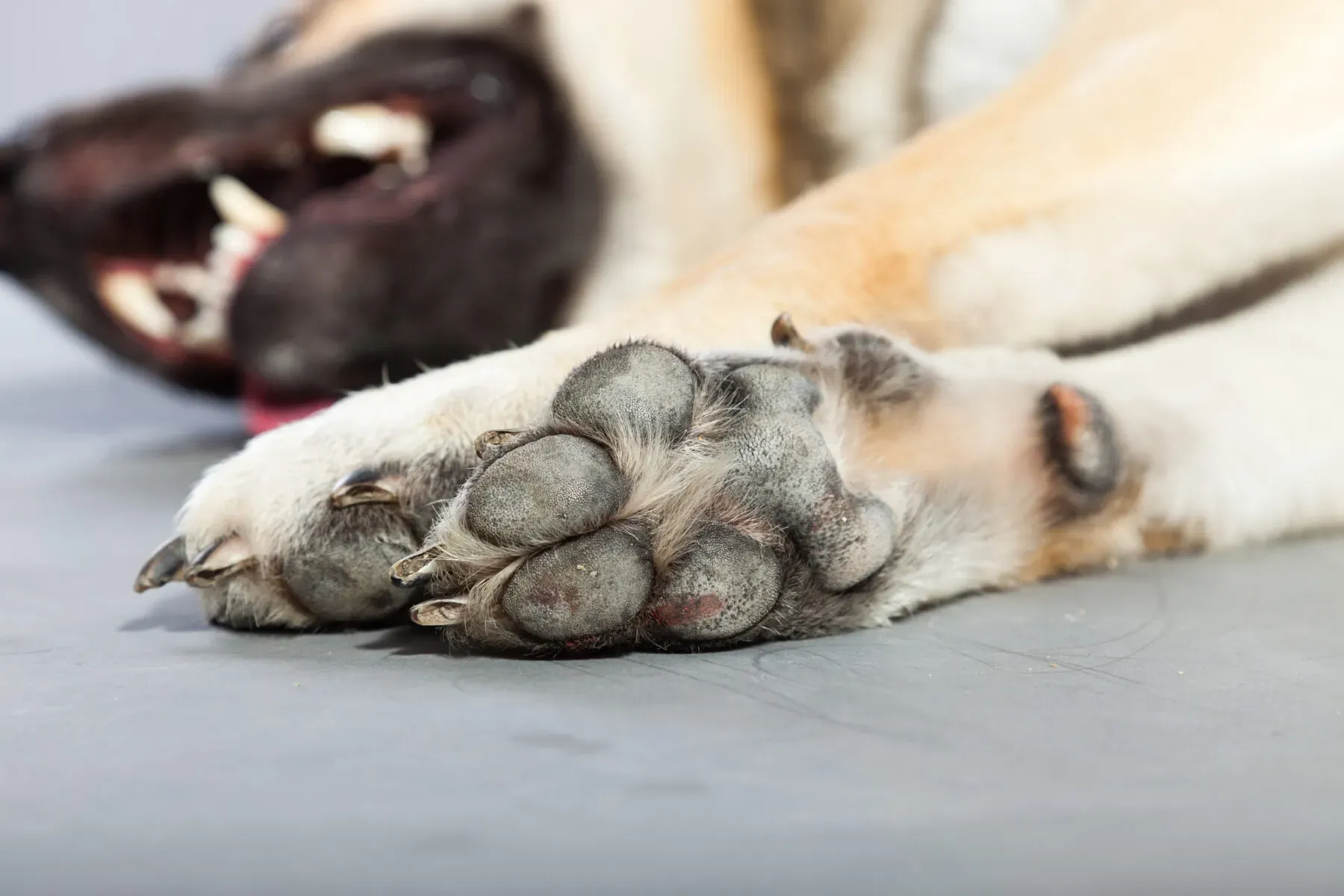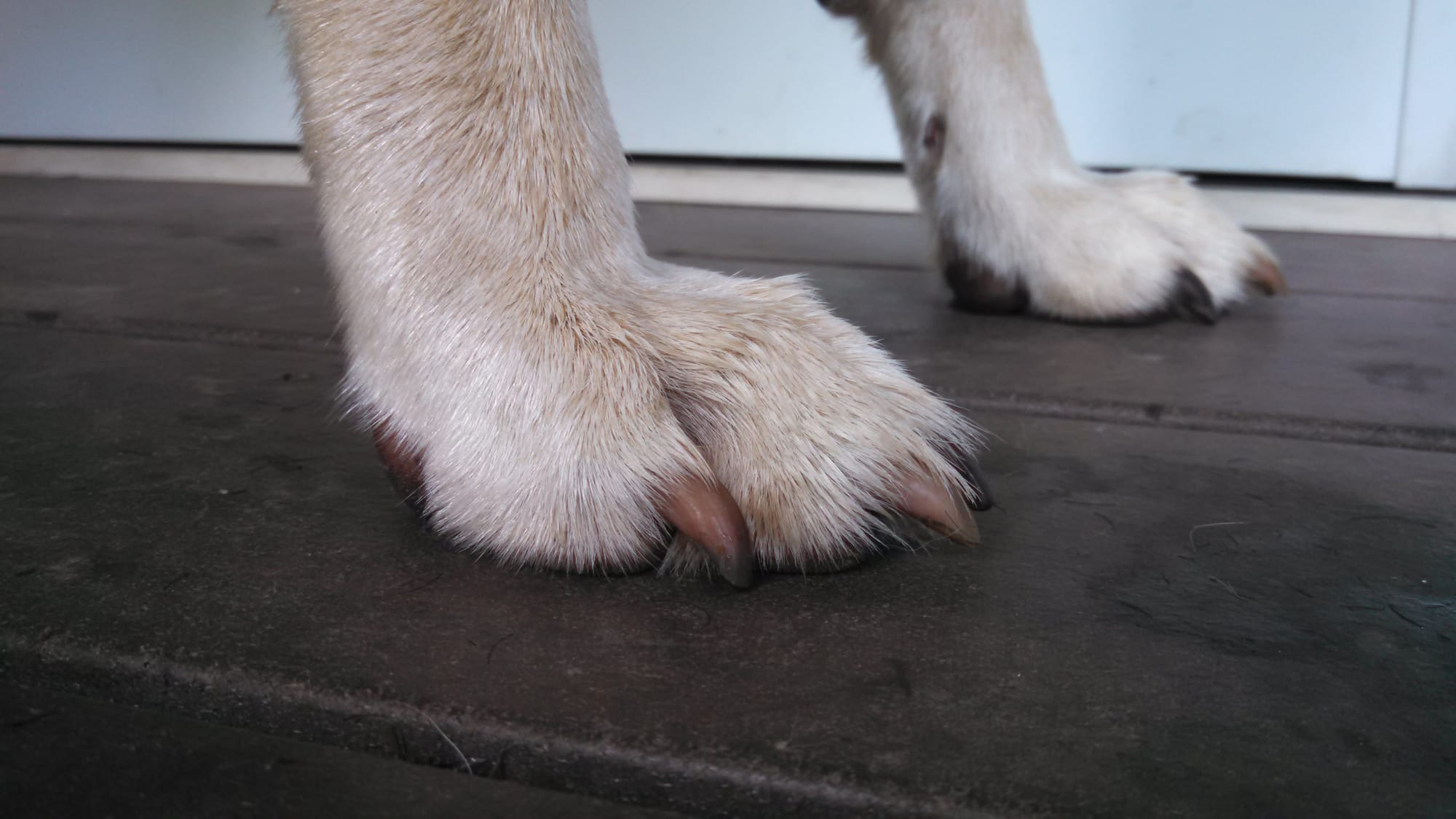Welcome to the fascinating world of Anatolian Shepherds, a breed known for its strength, intelligence, and distinct traits. As we explore the characteristics of these remarkable dogs, a curious question arises - do Anatolian Shepherds have webbed feet? Let's embark on a journey to unravel this mystery and gain insights into the anatomy, genetics, and environmental influences that shape the paw structure of these magnificent canines.

Anatolian Shepherd Breed Characteristics
Anatolian Shepherds, hailing from the Anatolian region of Turkey, are a breed renowned for their exceptional characteristics. Let's delve into the key features that define these remarkable dogs.
Origins and History:
The Anatolian Shepherd has a rich history, dating back thousands of years. Originating in Turkey, these dogs were primarily used as guardians of livestock. Their lineage is deeply embedded in the Anatolian culture, where they played a pivotal role in protecting herds from predators.
Physical Characteristics:
One cannot help but be captivated by the imposing physical presence of Anatolian Shepherds. These dogs boast a strong and muscular build, well-suited for their role as formidable guardians. Their thick double coat serves as protection against varying weather conditions, allowing them to thrive in diverse environments.
Temperament & Behavior:
Known for their intelligence and independence, Anatolian Shepherds are discerning and self-assured. Their loyalty to their family and flock is unwavering, making them excellent companions. Despite their aloof demeanor with strangers, they are affectionate and protective, particularly with those they consider part of their pack.
Canine Anatomy: Understanding Webbed Feet
To comprehend whether Anatolian Shepherds have webbed feet, it's crucial to delve into canine anatomy, particularly focusing on paw structures.
Paw Anatomy in Dogs:
Dogs' paws are intricate structures designed for various functions. The anatomy includes pads for shock absorption, claws for traction, and the interdigital webbing, which differs among breeds.
Webbed Feet in Canines:
Webbed feet are a distinct feature found in some dog breeds. Typically associated with water activities, webbing between a dog's toes aids in swimming. Breeds like Labrador Retrievers are classic examples of dogs with well-developed webbed feet.
Do Anatolian Shepherds Have Webbed Feet?
Now, let's address the intriguing question: Do Anatolian Shepherds have webbed feet?
Unveiling the Paw Structure:
Unlike breeds specifically adapted for water-related tasks, Anatolian Shepherds do not possess webbed feet in the conventional sense. Their paw structure is adapted to suit their historical role as guardians of livestock in varied terrains.
Adaptations for Different Environments:
Anatolian Shepherds' paw adaptations reflect their versatility. Whether navigating rugged mountainous terrain or patrolling open plains, their paws provide the necessary support and traction without the need for extensive webbing.
Evolutionary Influences on Paw Structure:
The absence of webbed feet in Anatolian Shepherds aligns with their evolutionary history. Shaped by the demands of their pastoral responsibilities, their paw structure has evolved to meet the challenges posed by diverse landscapes.
Evolutionary Perspective
Understanding the characteristics of Anatolian Shepherds, especially in relation to webbed feet, requires a journey through their evolutionary history. Let's explore how evolution has shaped these remarkable dogs.
Evolutionary Roots:
Anatolian Shepherds, deeply rooted in Anatolian history, have undergone centuries of evolution. Their development was intricately tied to the pastoral needs of the region, emphasizing traits that enabled them to excel as guardians of livestock.
Selective Breeding:
The process of selective breeding played a pivotal role in refining the Anatolian Shepherd breed. Over generations, specific traits were emphasized to enhance their effectiveness in protecting herds, with a focus on adaptability to different terrains and climates.
Adaptations for Survival:
Evolutionary pressures favored Anatolian Shepherds with traits conducive to survival. Their ability to navigate challenging landscapes and endure various environmental conditions became integral to their evolutionary success.

The Role of Environment
The environment in which Anatolian Shepherds find themselves greatly influences their physical characteristics, including the structure of their paws. Let's explore how the environment has shaped these happy dogs.
Diverse Habitats:
Anatolian Shepherds have been deployed in diverse settings, ranging from mountainous regions to flat plains. Each environment presents unique challenges, and the breed's ability to adapt to these challenges is reflected in their physical attributes.
Terrain-Specific Adaptations:
The demands of the environment have led to specific adaptations in Anatolian Shepherds. Whether traversing rocky slopes or patrolling expansive grasslands, their paws have evolved to provide optimal support and traction.
Environmental Influence on Paw Structure:
The role of the environment extends to the structure of Anatolian Shepherds' paws. While webbed feet might be advantageous for water-related tasks, Anatolian Shepherds have evolved with a paw structure suited for their primary responsibilities in varied landscapes.
Webbed Feet in Working Dogs
The concept of webbed feet is often associated with working dog breeds, particularly those involved in water-related activities. Let's explore the relevance of webbed feet in the context of Anatolian Shepherds' roles as working dogs.
Advantages of Webbed Feet:
Certain working dog breeds, like Retrievers, benefit from webbed feet during activities such as swimming. The increased surface area provides better propulsion, making them efficient in water-related tasks.
Anatolian Shepherds as Working Guardians:
While Anatolian Shepherds may not have webbed feet, their effectiveness as working dogs lies in their unparalleled guarding abilities. Their paw structure, adapted to diverse terrains, enhances their capability to protect and patrol.

Tailored Paw Structure for the Job: Anatolian Shepherds' paw structure aligns with the demands of their working roles. The absence of extensive webbing doesn't hinder their performance as guardians, as their unique adaptations suit the challenges presented by their responsibilities.
Perplexity of Anatolian Shepherd Traits
The Anatolian Shepherd is a breed that captivates with its unique blend of traits, contributing to its enigmatic and sometimes perplexing nature. Let's unravel the intricacies of Anatolian Shepherd traits and explore the factors that make them stand out.
Independent Nature:
Anatolian Shepherds are renowned for their independence. This trait, rooted in their history as guardians, makes them self-reliant and capable decision-makers. Understanding the balance between their independence and loyalty is key to comprehending their behavior.
Loyalty and Protective Instincts:
Despite their independent streak, Anatolian Shepherds are fiercely loyal to their family and flock. The depth of their loyalty is matched only by their unwavering protective instincts. This duality of independence and loyalty adds a layer of complexity to their character.
Adaptability to Various Environments:
The adaptability of Anatolian Shepherds is both fascinating and perplexing. Thriving in a spectrum of environments, from mountainous terrains to open plains, these dogs showcase a versatility that challenges conventional expectations.
Burstiness in Canine Genetics
Burstiness in genetics refers to the diversity observed within a particular breed. Let's explore how burstiness manifests in the genetics of Anatolian Shepherds, contributing to the varied traits seen within the breed.
Genetic Diversity:
Anatolian Shepherds exhibit a burstiness in their genetic makeup, resulting in a wide range of physical and behavioral traits. This diversity is a testament to the breed's extensive history and the influence of various factors on their genetic pool.
Burstiness and Individuality:
Each Anatolian Shepherd is a unique individual, showcasing a burstiness that sets them apart from others in the breed. Whether it's coat color, size, or temperament, the burstiness in genetics ensures that no two Anatolian Shepherds are exactly alike.
Environmental Influences on Genetic Expression:
The burstiness in Anatolian Shepherd genetics is not solely predetermined. Environmental factors also play a role in shaping the expression of certain traits. This dynamic interaction between genetics and environment contributes to the fascinating burstiness observed in the breed.
Specifics of Anatolian Shepherd Paw Structure
The paw structure of Anatolian Shepherds is a critical aspect of their physical makeup, influencing their performance in various terrains. Let's delve into the specifics of their paw structure and how it aligns with their unique roles.
Paw Size and Shape:
Anatolian Shepherds typically have large, well-padded paws. This size and shape provide stability and support, crucial for traversing different landscapes. The proportional relationship between their paw size and body size contributes to their agility.
Claw Length and Traction:
The length of Anatolian Shepherds' claws is another noteworthy feature. These claws, while not excessively long, provide essential traction, aiding in navigating challenging terrains and ensuring a secure grip.
Absence of Extensive Webbing:
Unlike breeds with webbed feet, Anatolian Shepherds generally lack extensive webbing. This absence is a deliberate adaptation, allowing them to excel in their roles as guardians without the need for specialized paw structures associated with water-related tasks.
The Importance of Paw Adaptations
An often-overlooked but crucial aspect of Anatolian Shepherds' anatomy is their paw adaptations. These adaptations play a vital role in the breed's survival and ability to fulfill their responsibilities as guardians. Let's explore the significance of Anatolian Shepherds' paw adaptations.
Terrain-Specific Functionality:
Anatolian Shepherds are deployed in a variety of terrains, each presenting unique challenges. The structure of their paws is finely tuned to provide optimal functionality in different environments. From rocky mountain slopes to vast plains, their paws offer the necessary support and grip.
Shock Absorption and Stability:
The importance of shock absorption cannot be overstated, especially for a breed involved in traversing uneven terrains. Anatolian Shepherds' paw pads act as natural shock absorbers, reducing the impact on their joints and ensuring stability during patrols and protective duties.
Traction for Vigilance:
The ability to maintain traction is critical for Anatolian Shepherds, particularly when patrolling and keeping watch over their flock. The specialized adaptations in their paw structure, including the length of their claws, contribute to enhanced traction on various surfaces.
Understanding Burstiness in Genetics and Traits
Burstiness in genetics refers to the variability seen within a breed. Anatolian Shepherds exemplify this burstiness, showcasing a diverse range of traits. Understanding this genetic burstiness provides insights into the uniqueness of individual dogs within the breed.
Genetic Diversity for Resilience:
Anatolian Shepherds' bursty genetics contribute to their resilience and adaptability. A diverse genetic pool enhances the breed's ability to withstand environmental challenges, ensuring that different dogs within the breed may excel in specific roles or environments.
Unpredictability in Traits:
Burstiness in genetics results in a certain unpredictability in the expression of traits. While certain characteristics may be common among Anatolian Shepherds, the range of possibilities within the breed adds an element of surprise, making each dog a distinct individual.
Environmental Influences on Genetic Expression:
The interaction between genetics and environment further accentuates burstiness. Anatolian Shepherds raised in different settings may express genetic traits in unique ways, showcasing the dynamic interplay between their genetic makeup and external influences.
Personal Stories: Anatolian Shepherds in Different Settings
To truly appreciate the impact of Anatolian Shepherds in various environments, let's delve into personal stories that highlight their adaptability and effectiveness in different settings.
Mountainous Regions: Guardian of the Heights:
In the rugged mountains, Anatolian Shepherds have been steadfast guardians of herds. Their surefootedness and adaptability to steep slopes make them invaluable protectors in challenging alpine environments.
Open Plains: The Watchful Sentry:
On expansive plains, Anatolian Shepherds have excelled as watchful sentinels. Their keen senses and swift movements ensure the safety of livestock in vast, open landscapes.
Harsh Climates: Endurance in Adversity:
In harsh climates, be it the scorching heat or freezing cold, Anatolian Shepherds showcase their endurance. Personal stories abound of their resilience in extreme weather conditions, emphasizing their adaptability.

Conclusion
In conclusion, Anatolian Shepherds may not have webbed feet in the traditional sense, but their paw structure is a masterpiece of evolution. As we appreciate these dogs for their strength, loyalty, and unique characteristics, let's celebrate the intricacies of their paw design that make them exceptional guardians.
Frequently Asked Questions (FAQs)
- Q1: Do all Anatolian Shepherds have the same paw structure?
- No, Anatolian Shepherds may exhibit variations in paw structure due to burstiness in their genetics. Environmental factors also contribute to individual differences.
- Q2: Are webbed feet a disadvantage for dogs in certain environments?
- Webbed feet are advantageous for water-related tasks but may be a disadvantage in dry or rocky terrains. Anatolian Shepherds have evolved without extensive webbing to suit their diverse working environments.
- Q3: Can Anatolian Shepherds swim without webbed feet?
- Yes, Anatolian Shepherds can swim proficiently despite not having webbed feet. Their paw structure, adapted for various terrains, provides ample support in water.
- Q4: Do Anatolian Shepherds require special paw care in different climates?
- While they have resilient paw structures, it's advisable to monitor and care for their paws, especially in extreme climates. Regular checks for injuries and proper grooming are essential.
- Q5: How can I ensure my Anatolian Shepherd's paws stay healthy and strong?
- Maintain regular paw checks, trim claws as needed, and provide a balanced diet. Additionally, be mindful of environmental factors, and consider paw protection in extreme conditions.